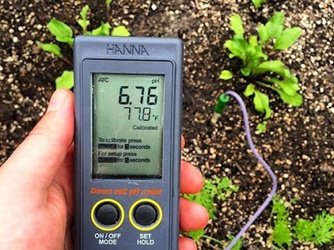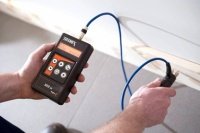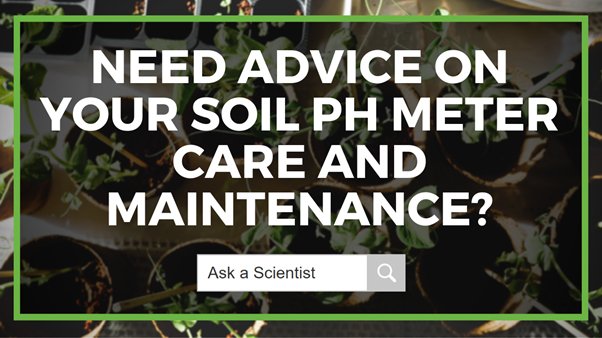How To Get Your Soil pH Tester Ready For Spring

Spring is on the horizon – in only 33 days, but who’s counting?
Now is the ideal time to begin planning and putting your mind to your garden. What do you want to plant, where to place new varieties, when is the right time?
Because your soil pH meter is a fantastic tool to help you make such important decisions, our scientists have created some helpful tips to get your soil pH meter working perfectly in readiness for the planting season.
What’s the Purpose of a Soil pH Tester?
Soil composition can vary significantly between locations - across districts and properties. Deviations occur naturally as a result of factors such as:
- Geology
- Topography
- Climate
- Soil organisms
- Time of year; and
- Land use.
Soil pH is an aspect of soil composition that plays a critical role in a plant’s ability to utilise trace elements essential for healthy plant growth. Figure 1 (below) demonstrates how nutrient absorption is affected by variations in soil pH, and a good pH tester provides a simple, valuable way to measure your soil’s pH accurately.

Figure 1 Demonstrates how soil pH affects whether a particular element is more or less available to plants
Benefits of Measuring Soil pH
1. Matching plants and crops with the right soil pH
Determining a soil’s alkalinity or acidity on location is one way to make sure it’s suitable for a particular plant or crop. If your sample indicates your soil is outside an ideal pH range for your desired planting, without taking remedial action, you could expect slowed growth and reduced yields
2. Knowing how to fertilise or balance your soil
Fertilisers can be costly, and the wrong one can do more harm than good. A good pH meter can help you decide precisely what fertilisers or soil pH adjusters you require for certain plants to thrive.
3. Surveying land & gardens
Soil surveys are vital for farmers valuing rural land and a step a serious gardener can take to evaluate a property’s potential to support flora.
Get Your Soil pH Tester Ready For Spring - Two Simple Steps
Preparing your soil pH testing device for Spring will ensure reliable results, and as a bonus, prolong its operating life. Here are two simple steps that will make ready your soil pH tester for Spring action!
1. Clean your soil pH tester
If you have shelved your pH meter for the Winter or used it sparingly, now is the right time to give it a deep clean. There’s no elbow grease required if you follow these instructions:
- Place your soil tester in an electrode cleaning solution for 10-15 minutes.
- After 10-15 minutes, remove it from your cleaning solution, then rinse thoroughly with distilled water.
- After rinsing, gently shake off any excess water. Most meter instructions recommend not to wipe down your sensor with a tissue or cloth - this can cause static and harm the electrode.
- Place the sensor tip in its cap along with some storage solution.
- Once you have performed a deep clean, rinsing your sensor’s electrode with distilled or deionised water between measurements should be sufficient to maintain its accuracy for some time.
Scientist’s Tip # 1It’s best practice to let your pH meter’s sensor sit in a storage solution for at least an hour before calibration and use. If you ever notice a coating forming over the sensor or if your soil pH measurements become inconsistent, repeat steps 1-5 above. |
2. Calibrate your soil pH tester
After following the steps above, your meter will be clean and ready for calibration. Calibration is the second critical step to ensuring your pH meter is performing accurately.
Instrument Choice Scientists recommend performing at least a two-point calibration using pH buffers that shoulder your expected measurement range. After that, your calibration schedule will depend on how often you use your device and how accurate it needs to be.
If you would like help calibrating your pH meter contact an Instrument Choice Scientist.
Scientists Tip #2Once your device is cleaned and calibrated – it’s time to get out and do some gardening! |
Preserving Your pH Meter Between Use
Most pH meters specify for the soil pH meter’s electrode to remain in storage solution when not in use. This requirement will keep your meter’s bulb at an adequate level of sensitivity. To explain, the sensitivity of the pH electrode is due to a hydrated gel layer that conducts an electrical signal during a pH reading. Therefore, storing your pH electrode in a dry condition could seriously reduce its performance.
Scientists Tip #3Check your electrode’s user manual or operational instructions for specific storage instructions. |
Occasionally forgetting to cap your meter may not result in permanent damage. However, should this occur, we recommend you try this fix - but can’t guarantee it will work:
Scientists Tip #4Try reconditioning your dehydrated pH sensor by first soaking it in storage solution for a couple of hours, then perform a calibration before use. |
If your meter still doesn’t work to your satisfaction after following all our scientists' tips above, please get in touch with us!
The Final Word
Cleaning and calibrating is essential preparation to have your soil pH meter ready for Spring gardening. What’s more, correctly storing your soil pH tester will extend its working life and keep it ever-prepared for work.
Browse all calibration buffer, storage and cleaning solutions here
If you need advice on your soil pH meter care and maintenance, speak with an Instrument Choice Scientist! Call 1300 737 871 or email [email protected]
Also interesting
The professional-grade IC-QM1598 Sound Level Meter comes with all the tools required to perform accurate environmental sound level measurements. This article shows you how to perform a calibration using the included sound calibrator to ensure your meter is performing to the highest level of accuracy.
Get our scientists’ how-to guide to calibrating the Pro Sound Level Meter (IC-QM1598) here.

Wood Moisture Meters remove guesswork and risk when determining moisture content in wood and wood products. Wood moisture meters are commonly used by builders, pest controllers, restoration specialists, renovators and DIY enthusiasts.
So that you can find the best wood moisture meter for your application, our scientists have assembled a list of 2021’s best available moisture meters.
Curious? Need a top-performing or economical moisture monitoring solution? Check out the best wood moisture meters of 2021 here.


